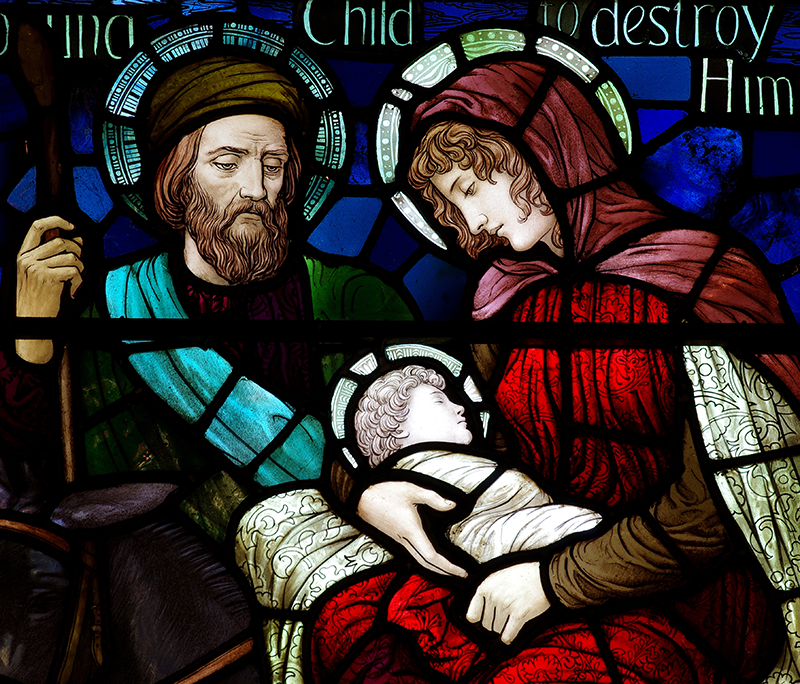
06 Dec JESUS IS GOD BECOME A MAN: The Christ of Christmas Part 6 of 8
Every Christmas season, our mailbox and inbox begin to fill up with cards reminding us that in Jesus Christ God became a man. But, how could this be?
Incarnation (from the Latin meaning “becoming flesh”) is the word theologians use to explain how the second member of the Trinity entered into human history in flesh as the God-man Jesus Christ. In an article published by Dallas Theological Seminary, scholar David J. Macleod explains:
The English word “incarnation” is based on the Latin Vulgate, “Et verbum caro factum est.” The noun caro is from the root carn- (“flesh”). The Incarnation means that the eternal Son of God became “flesh,” that is, He assumed an additional nature, namely, a human nature (Bibliotheca Sacra, 161.641.75).
The Incarnation is expressly stated in John 1:14, which says, “And the Word became flesh and dwelt among us, and we have seen his glory, glory as of the only Son from the Father, full of grace and truth.”
The great theologian J. I. Packer has described the Incarnation as the “supreme mystery” associated with the gospel. The Incarnation is more of a miracle than the Resurrection because in it somehow a holy God and sinful humanity are joined, yet without the presence of sin. Packer writes, “Nothing in fiction is so fantastic as is this truth of the Incarnation.”
In Jesus, God enters the human realm. He walks on water, calms storms, heals the sick, feeds the hungry, raises the dead, and conquers the grave. In other words, he did not change his identity as God but rather changed his role. As the church father Augustine explained, “Christ added to himself that which he was not; he did not lose what he was.”
Jesus, who was fully equal with God in every way, who was the very form of God, did not see that as something to keep in his grip, but emptied himself of that equal status and role to take the status and role of humanity (Phil. 2:5–11). He who was and is God took the likeness of humanity. God became the “image of God” for the sake of our salvation (Gen. 1:27; 2 Cor. 4:4).
Theologians capture this laying aside of the divine equality, the divine lifestyle, with the phrase he laid aside the independent exercise of his divine attributes. What this means is that he didn’t continually exhibit the so-called incommunicable attributes, such as his immortality, omniscience, or omnipresence (except at the leading of the Holy Spirit, which we’ll discuss below).
Instead of availing himself of the many attributes of God, Jesus added to these all of the attributes of humanity—except for sin. He was tempted, just as we are (Heb. 4:15). He had to learn and grow, just as we do (Luke 2:40, 52). Jesus was human, and yet Jesus was without sin.
The language about Jesus growing is the same language that is used of Samuel in 1 Samuel 2:26: “Now the boy Samuel continued to grow both in stature and in favor with the Lord and also with man.” The connection is that just as Samuel grew up learning and maturing, so did Jesus. On this point, one commentator says, “Jesus is growing intellectually, physically, spiritually, and socially.”
The Incarnation reassures us that it is not a sin to be human. It is not a sin to get tired; Jesus got tired. It is not a sin to be tempted; Jesus was tempted. It is not (always) a sin to learn and grow through experience, which includes making mistakes such as not getting something right the first time but learning by doing. Luke 2:52 is clear that “Jesus increased in wisdom and in stature and in favor with God and man.” Have you ever asked the Holy Spirit to empower your life as he did the earthly life of Jesus Christ?
Portions of this blog post were adapted from Vintage Jesus (2007, Crossway) and Doctrine (2010, Crossway), by Mark Driscoll and Gerry Breshears.
Published May 22, 2014


